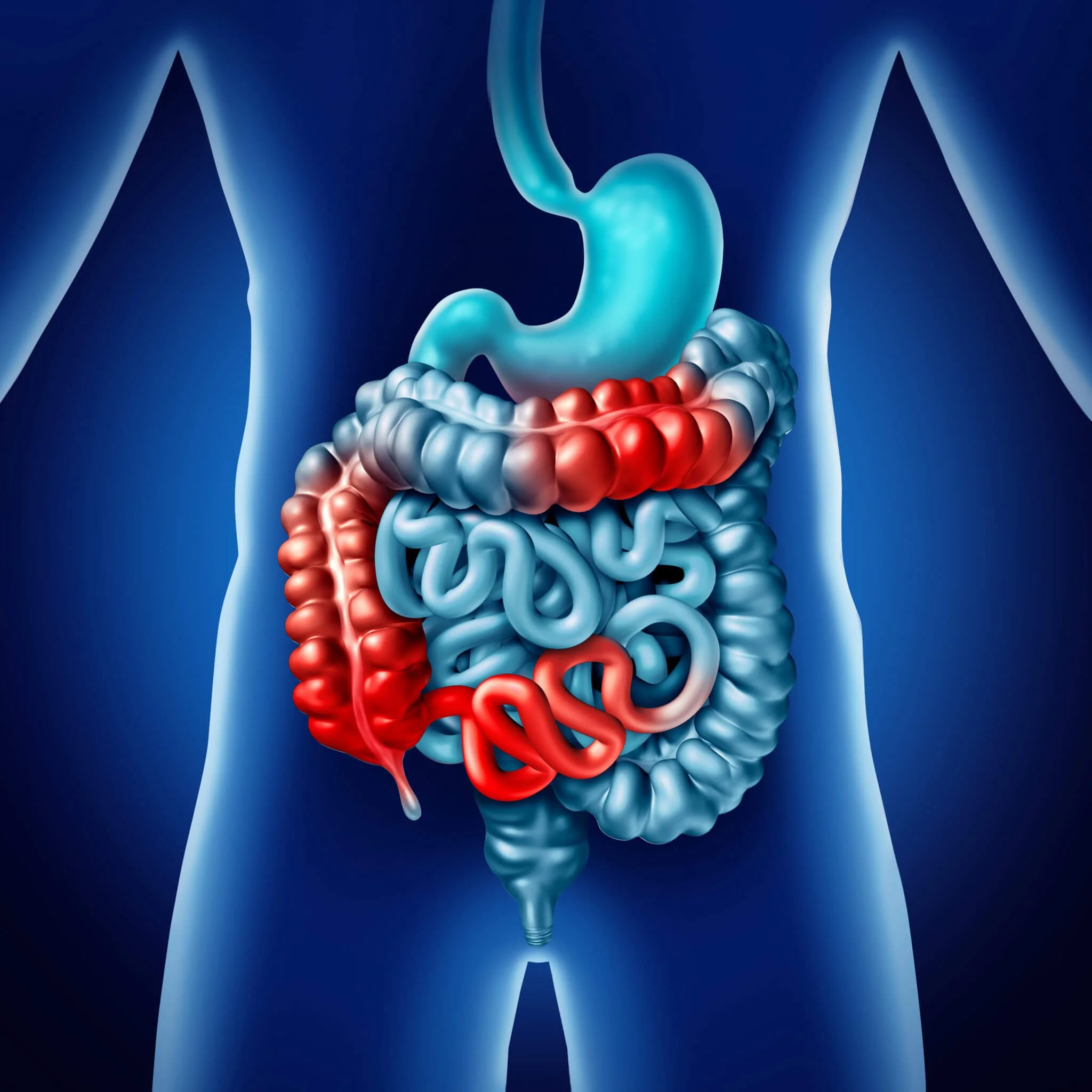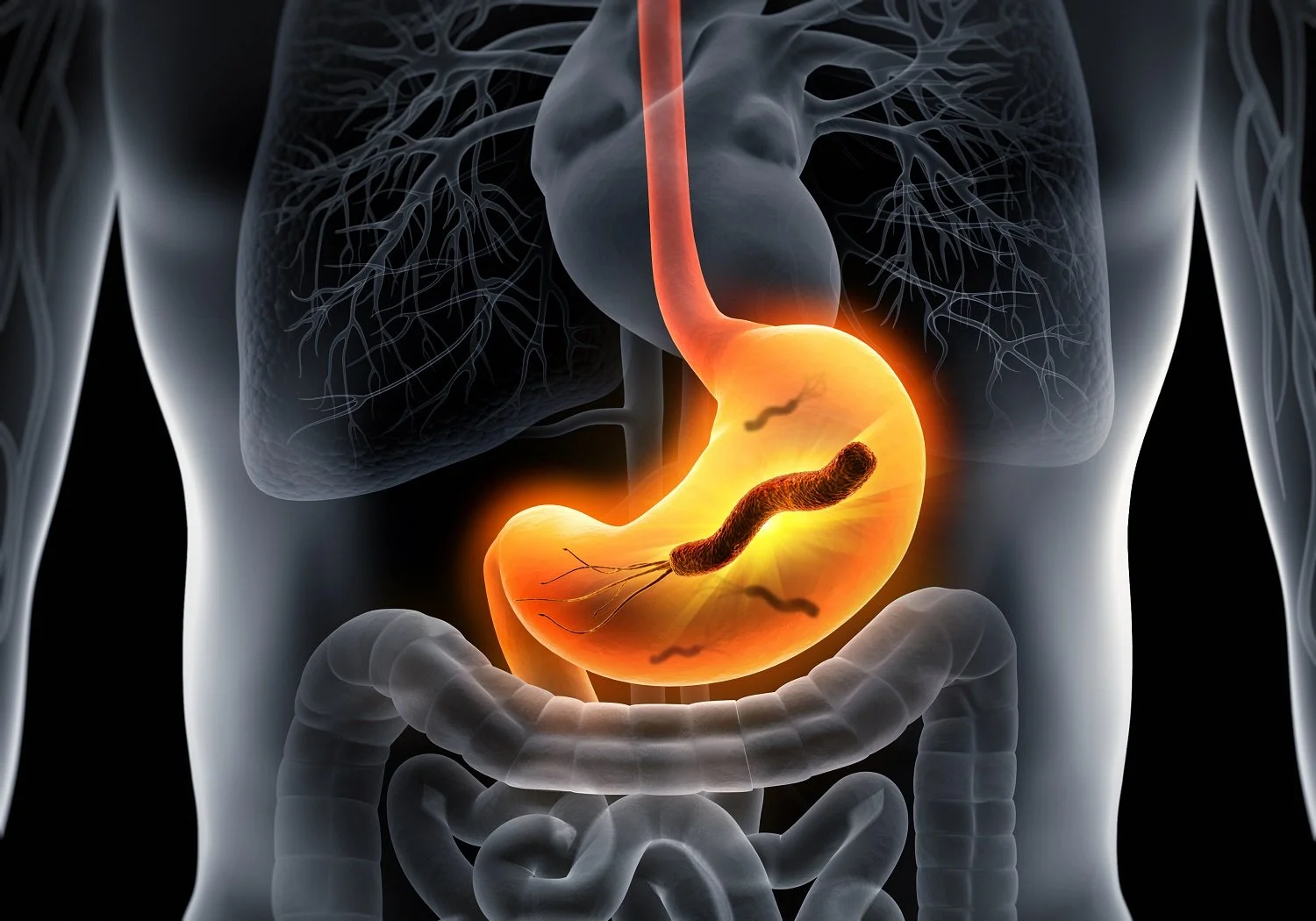https://www.unvaccinatedchildren.com
The Magnesium Miracle - Kids Edition
Magnesium is the most under-recognized electrolyte and mineral disorder in the United States. Dr. Mildred Seelig, one of the country's leading authorities on magnesium suggests that 80%-90% of the population is deficient in magnesium.
Magnesium is an essential cofactor required by 300 enzyme systems that promote thousands of biochemical reactions in the body. It maintains a normal temperature, produces and transports energy, transmits nerve signals, and relaxes muscles. Magnesium is vital for glucose, fat, and protein metabolism, and affects every cell in the body in a positive life-supporting way. Magnesium also supports healthy bones by regulating calcium absorption and metabolizing the active form of Vitamin D from its storage form. Without magnesium, supplementing with vitamin D will not get your levels up to the desired number. If you are supplementing with vitamin D without proper magnesium levels, you will deplete your magnesium even more.
When one sweats, a significant amount of magnesium is lost. Even if one doesn’t sweat much, you are still likely to be deficient; I see deficiency in every mineral test I run. Kids and older folks are almost always low in this incredible mineral. It makes up the energy of our cells through a little organelle called mitochondria. Mitochondria is the power plant of our cells, which helps tissues and organs to do their job properly. It can be found in large amounts in muscle, the heart and brain. So when someone has a condition/symptom in these areas in the body , there is likely a mitochondrial disfunction. It can be drastically improved with a balanced magnesium level.
Common Symptoms of Magnesium Deficiency
The most common symptoms include back and neck pain, muscle spasms, anxiety, panic disorders, Raynaud's spastic vessels, arrhythmia, fatigue, eye twitches, vertigo, migraines.
Best Sources of Magnesium
The best way to make sure you are getting enough magnesium is to eat a variety of whole foods, including whole grains, nuts, seeds and vegetables; preferably food grown on naturally composted soil. The green color of green vegetables is due to chlorophyll, which is a molecule that contains magnesium. Avoid refined processed foods, especially white sugar and white flour products, as most magnesium is removed from them.
Magnesium Testing
I utilize a hair test mineral analysis to determine magnesium levels and ratios with other macro-minerals like potassium, calcium and sodium. I will run this lab every 3-4 months for a year, as that is often how long it can take for these macro minerals to be balanced. I also assess aluminum levels and other toxic metals as these displace magnesium, making it more difficult to absorb and get into the cell.
Dosing
ReMag® minerals are meticulously prepared from a pure source of magnesium chloride and developed to efficiently deliver stabilized magnesium ions that are similar in size to plant magnesium. ReMag® is a picometer-ionic form of magnesium. Picometer magnesium is smaller in diameter than the body's mineral ion channels. Its direct and complete absorption into cells before it reaches the large intestine means ReMag® does not have a laxative effect.
Kids
I have been working on my son’s (12) magnesium levels with a quarterly hair tissue mineral analysis for about a year now, and the results are absolutely incredible. Each test shows improved levels of magnesium and ratios between magnesium and other minerals. As a result, he has much improved mood, sleep, endurance and recovery time. He plays competitive ice hockey and with his mineral regimen that I call his evening “mineral cocktail," his endurance, strength and recovery is off the charts. He is a much healthier and happier kid on this program. If you have a child who plays sports or just needs a little extra support, mineral balancing can really help and is an easy way to dose.
Please read full article regarding: Is Your Teenager At Risk of Dying From Heart Failure? What Every Parent MUST Know to Prevent Sudden Death!
Compliments from Functional Medicine University
Three Reasons to Go Easy on Gluten
Gluten has been the topic of hot debate by a growing number of healthcare providers. Me included! I have been GF for over 10 years and feel it has greatly improved my quality of life. When I was eating and drinking whatever I wanted, I had many random health symptoms. Body pain, gut disturbance, sinus congestion, poor sleep and brain fog. It takes 90 days (3 months) of being gluten free for it to completely get out of your system. Once I did this, it became very obvious that many of my health problems were tied to gluten. Once I re-introduced it, all of my symptoms came back. This correlation made avoiding gluten that much easier. Going GF is a LOT easier than it sounds and I have a ton of advice to give on the topic if you are interested in learning more.
The literature is overflowing with the detrimental impact gluten has on the intestinal wall.
When you eat gluten, your body produces a molecule called zonulin. The increase in zonulin is linked to increased intestinal permeability aka: leaky gut. I test for Zonulin levels and gut integrity that can point to a gluten allergy or sensitivity on a functional test.
Leaky gut can create a cascade of damaging health issues including autoimmune disease and many inflammatory diseases.
Reasons to avoid gluten:
1: Most of the wheat (gluten) eaten today is termed dwarf wheat and contains amylopectin A. This is a super starch worse than sugar. Of special interest, amylopectin A is a trigger of small LDL particles. When wheat is removed from the diet, these small LDL levels reduce by 90 percent. Amylopectin digestion may raise blood sugar and insulin levels, causing an increase in triglycerides and cholesterol and leading to fat accumulation
2: Most wheat has been sprayed with the weed killer, glyphosate. There is growing evidence linking glyphosate to cancer, endocrine disruption, fertility and reproductive concerns, kidney disease, heart disease, liver disease, microbiome disruption and neurotoxicity.
3: Most wheat contains a preservative called calcium propionate which has been linked to mood, behavior and attention problems.
Compliments from Functional Medicine University
HIIT and blood pressure
When it comes to lowering blood pressure exercise is a non-negotiable factor.
You may be thinking what is the most effective form of exercise to lower blood pressure.
More and more studies are showing the exciting results of something called HIIT in lowering blood pressure. HIIT stands for High Intensity Interval Training
What is HIIT?
HIIT is not any specific exercise, rather, it is a technique. You can apply this technique to almost any kind of exercise whether it be walking, riding a bike, swimming, doing some body weight exercises or even dancing in your living room.
HIIT training consists of combining very short bursts of working at your absolute max alternating short periods of active recovery rest. Research has found that this form of exercising gives you more health benefits than any other way of exercising.
It shortens the amount of time you need to spend on exercise and is more effective; you work out for just 10-30 minutes and reap impressive health benefits. You burn more body fat, your metabolism is stimulated for long after you finish exercising, and it also it helps you utilize oxygen more efficiently.
One of the biggest benefits people find from HIIT is the reduction in training time. Through HIIT, you can put in about half the amount of time compared to traditional cardio exercise to reach your goals.
One study found that just 2 minutes of HIIT sprinting increased metabolism as much as 30 minutes of running. HIIT increases the efficiency of your heart and HIIT training also has a major effect on naturally lowering your blood pressure.
HIIT and blood pressure:
Although most any type of exercise has its benefits, HIIT shines when it comes to saving time. Using the HIIT technique is the ultimate short-cut.
Study after study shows that HIIT exercise improves blood pressure in people with hypertension better than any other kind of exercise routine.
HIIT is extremely effective in reducing resting heart rate and blood pressure in overweight and obese individuals.
It has been shown that HIIT exercising just 3 times per week for just 20 minutes at a time lowers blood pressure more effectively than continuous endurance training.
What is the science that makes HIIT so effective?
HIIT training changes something called endothelial function.
The endothelium is a very thin membrane that lines the inside of your heart and your blood vessels. The cells in this membrane release a variety of substances that control how your blood vessels relax and contract.
We know that stiff hard arteries play a role in high blood pressure.
The ability of your artery walls to expand (vasodilate) is very important.
You need to have flexibility in your arteries to allow for appropriate blood flow throughout your body.
HIIT improves endothelial function and reduces the stiffness in your artery walls more so than any other traditional form or exercise.
Just a 1% improvement in your endothelial function can result in a 13% reduction in the risk of cardiovascular events like heart attacks and strokes.
One study showed that 73% of people restored blood pressure to normal using a HIIT training method for just 2 months and 24 exercise sessions. There was a significant reduction in systolic blood pressure from 145.4 (± 9.0) to 118.3 ( ± 15.6) mm Hg.
How to Apply HIIT
With HIIT training you're are going to go ‘all out' at a high intensity for short amounts of time. You then do an ‘active recovery' rest for a short interval. You can apply this technique to any kind of exercise, walking, running, jumping rope, cycling and even to weight training.
I personally prefer using a stationary bike for minimizing injury. It is simply a great option to implement HIIT into your workouts.
Using the HIIT on a stationary bike
Warm-up for 5 minutes on a low setting.
After your 5 minute warm-up increase the tension on the bike and pedal as fast as you can for 20 seconds. This is called the Sprint phase. After the 20 second sprint phase, lower the tension on the bike and comfortably pedal for 2 minutes.
This is one session of HIIT.
Repeat the above 5 times and you are done.
Heart Recovery Tip
After doing your 20 second sprint, lower the tension and wait 60 seconds and check your pulse. You want your elevated pulse to come down between 8-10 beats. This is your heart recovery zone. If for some reason your pulse does not come down 8-10 beats you should stop and call it a day. For example: After you do your all out sprint for 20 minutes your heart rate when go up to 110 beats. After one minute of decreasing the tension and comfortably pedaling, your heart rate should come down to 100-102 beats. That is a good heart recovery.
Although as I mentioned above I prefer the stationary bike this can be applied to walking as well. Simply walking at a comfortable pace for 5 minutes then do an all out "brisk" walk for 20 seconds. Walking comfortably for 2 minutes then repeat five times.
That is all you need to do to maximize this effective form of exercise (HIIT) to lower your blood pressure.
Compliments from Functional Medicine University
Blood Pressure Medications and Nutrient Deficiencies
If you are on blood pressure medication, you may want to pursue a functional lab that checks mineral levels! I have a great one - Hair Tissue Mineral Analysis.
HOW MEDICATIONS AFFECT NUTRIENTS
The following are a few ways that blood pressure medications can affect how our bodies absorb essential nutrients.
The medication can attach itself to a nutrient and pass it out of the body
The medication can alter the pH in the gut so that the nutrient can't be properly absorbed
Some medications need specific nutrients in order for them to be able to work.
The Following are Blood Pressure Medications, Nutrients Commonly Depleted and the Negative Impact of the Deficient Nutrients
ACE INHIBITORS: Examples include; ramipril, enalapril, lisinopril, quinapril, fosinopril, trandolapril and captopril. Nutrients that can be depleted by these medicines are zinc, magnesium, potassium and calcium. Deficiencies in these nutrients can cause hair loss, slow healing of wounds, loss of taste or smell, prostate problems, loss of sex drive, frequent infections, leg cramps, weight gain, bone loss, high blood pressure, higher risk of cancer.
CALCIUM CHANNEL BLOCKERS: Examples include; amlodipine, nifedipine, felodipine, diltiazem and verapamil. Nutrients that can be depleted by these medicines are potassium, calcium, vitamin D and possibly Co-Enzyme Q10. Symptoms that can occur due to deficiencies in these nutrients are fatigue, leg cramps, frequent infections, thirst, muscle weakness, bone loss, confusion, high blood pressure, confusion, heart disease and rapid or irregular heartbeat.
BETA BLOCKERS: Examples of beta blockers include; atenolol, metoprolol, sotalol and bisoprolol. Beta blockers can deplete the body of Co-Enzyme Q10 and melatonin. Symptoms that can occur due to deficiencies in these nutrients are insomnia, disrupted sleep, increased risk of cancer, autoimmune disorders, muscle cramps, memory loss.
CENTRALLY ACTING BLOOD PRESSURE MEDICATIONS: Clonidine and methyldopa are examples of this. These blood pressure medications can deplete Co-Enzyme Q10. Depletion of Co-Enzyme Q10 can result in fatigue, weakness, muscle and leg cramps, memory loss, frequent infection, liver damage, higher risk of heart attack, higher risk of cancer.
Conclusion
The above blood pressure medications may in fact cause nutrient deficiencies making it more important to consider supplementing with these nutrients to decrease the negative symptom consequences. We can reactively supplement with minerals and nutrients to counteract the deficiency as well as proactively supplement with needed compounds to prevent the need for these toxic medications in the first place.
Please contact me for a free 30-minute consultation, so we can talk about ordering a non-invasive functional mineral lab test and design a supplementation protocol.
Compliments from Functional Medicine University
Grass Fed Beef or Bison?
Bison is truly deeply nourishing!
"Food science tells us that eating a pound of meat that was produced by a cow (or Bison, or elk or...) foraging as nature intended, is FAR more nourishing than consuming the plants that animals ate to create that pound of meat. That's called an up-cycle; taking something and creating something more valuable. And the coolest part is nature does this effortlessly, every single second of every day, and done FAR more efficiently than modern farming practices."
Eat your clean meat! And the more wild, the better! Stay away from factory farmed meat as the quality is FAR inferior and cruel to the animals.
If you don't eat wild meat or feel your mineral levels are off, contact me for a free 30 minute consultation. We can check your minerals with a simple HAIR functional lab.
What's Your Waist to Hip Ratio? Your Health Depends on It!
The waist-to-hip ratio (WHR) is a quick measure of fat distribution that may help indicate a person's overall health.
What does a person's waist-to-hip ratio say about their health?
Research shows people who are “apple-shaped” are at a greater risk of certain health conditions than those who are “pear-shaped” (when the hips are wider than the upper body).
These health conditions include:
Cardiovascular disease: One study found that abdominal obesity increased the risk of cardiovascular disease and cancer. Another study found the WHR predicted cardiovascular disease more effectively than BMI or waist circumference. A third study found that WHR is a better indicator of risk of mortality from cardiovascular disease than waist circumference alone.
Type 2 diabetes: A 2016 study found that an increased waist circumference was linked to an increased risk of type 2 diabetes.
Fertility: A 2002 study found that women with a WHR of over 0.80 have a lower pregnancy rate than those with a lower WHR, regardless of their BMI.
A 2006 study with almost 15,000 older people (75 years of age or older), it was concluded that "waist to hip ratio" is more important than how much you weigh. The researchers looked at the relationship between waist to hip ratio and Body Mass Index (BMI - how we measure weight for height) and how many people died over the next 6 years.
So how do you measure your waist to hip ratio? You need a tape measure and a calculator. Here's how you do it:
1: Measure your waist at the smallest point - usually at the navel or just above it
2: Measure you hips at the widest, largest part
3: Divide your waist measurement by your hip measurement (Waist Measurement ÷ Hip Measurement)
Conclusion
Measuring a person's WHR is a quick way to get an indication of:
Overall health
Obesity levels
Risk of weight-related health conditions
If you are looking to reduce your weight, improve energy levels and firm up metabolic health, it can be done. I will utilize a functional lab to determine which minerals are out of balance and provide lifestyle changes to implement that will drastically improve your situation. Please contact me for a free 30-minute consultation.
Compliments from Functional Medicine University
SMASH: The Potent Recipe for Increasing Omega 3
The acronym SMASH stands for salmon, mackerel, anchovies, sardines and herring. These are the fish that are safest and healthiest to eat. They are nutrient-rich, high in omega-3s, and are low in mercury.
SMASH fish are all small fish because the larger the fish and the longer its lifespan, the higher its mercury content.
Mercury, in excess, can impair vision, coordination, and speech, and can cause muscle weakness.
Research, including a study published in a 2020 issue of the journal Biomolecules, has associated higher levels of mercury in the brains of patients with Alzheimer's disease.
Here are 5 reasons you should add more SMASH in your life.
1: SMASH fish are high in long-chain Omega-3 fatty acids. These healthy fats are easily absorbed, are high in anti-inflammatory properties, and can help reduce cardiac issues as well as symptoms of autoimmune conditions.
2: SMASH fish are high in selenium and low in mercury.
3: The proteins in SMASH fish are easy to digest.
4: SMASH fish contain iodine. Iodine is difficult to source from other foods, but it's essential for proper thyroid and immune function.
5: SMASH fish are a great source of Vitamin D.
Long story short, start adding some SMASH fish into your diet- the benefits are endless!
Mycotoxins (Mold) and Anxiety
Many people may be surprised to hear that they have mold in their body. Most people also don't know that mold produces mycotoxins, which is actually a gas that can be inhaled or absorbed through the skin. About 50% of homes in the US are known to have toxic levels of this natural occurring gas. Keep in mind, mold does not just exist in the home; it can be present in your car, school, work and food! Mold tends to grow in abundance on grains, peanuts and coffee, so be sure to know the source of these foods before ingesting. If you have one or more of the "random symptoms" listed below, and cannot figure out the source, it may be a good idea to consider mold or a fungal infection:
Eyes, ears, nose and throat: sneezing, runny nose, chronic sinusitis, ringing in ears, irritated eyes.
Respiratory: shortness of breath, wheezing, asthma, chronic illness, dry cough
Digestive: nausea, irritable bowel, vomiting, bloating, sensitivities, pain, sweet cravings
Circulatory: easy bruising or bleeding, varicose veins, irregular heartbeat
Skin: sensitive, itchy skin, burning, flushing, rash, fungal infections
Brain: fog, confusion, slowed thinking, memory loss, trouble finding right word, dementia
Urinary: overactive bladder, blood in urine, infections
Immune: susceptible to infections, long lasting colds, chronic viral infections
Anxiety and other sudden mental/emotional related symptoms
So many systems of the body are affected by this toxin, and it is SO important to avoid and remove it from our body, environment, and lifestyle. If you have any of the symptoms listed above, I would recommend getting a mold test (both in your home and to see if it is present in your body). For home tests, it is important to know that not all mold testing is created the same, and there are more reliable tests than others (reach out, and I can recommend some credible companies). Specific to testing for mold toxicity in your body, I use an excellent, non-invasive lab test (urine usually) to help determine the specific type of mold, how much there is, the likely source, and how well your body is able to eliminate the toxin. If there is mold present in your body, I will offer ways for you to remediate your home or car, eliminate specific foods, and discuss if your environment is the best for your health. There are some basics that are easy to start with, such as using high quality air filters (austin air or air doctor) in your home. I will incorporate herbs and supplements that will help detoxify and nourish the body, such as: binders, bile movers, quercetin, milk thistle, and turmeric. There are many strategies I can use to help repair the body once we have successfully removed the source of the toxin and opened up detoxification pathways. Some of my favorites include: lymph massage, sauna therapy, bioflavonoids/antioxidants, and raising Glutathione levels.
I’ve been through this personally, so please don’t hesitate to reach out. If you have odd symptoms that pop up out of the blue, or have had an issue that doesn’t seem to want to go away, I would love to help you find the root cause. If you decide to work with me, we will start with a simple urine lab test that will detect any mold, type, and the amount of accumulation in your body. Next, we would work on removing it from your environment and body. And, last but not least, we would nourish and strengthen the body so it can heal from this monster that can wreak so much havoc in people's lives and well being. I would love to help you on your path to wellness and ultimate well-being!
Nattokinase Cardiovascular Benefits
Nattokinase is an enzyme that is extracted from a popular Japanese food called natto. According to legend, the warrior Minamoto No Yoshiie found boiled soybeans that had been left on straw and had fermented, leading to the discovery of Natto. By the end of the Edo period (1603-1867), Natto had become a regular part of Japanese culture in some areas. Some believe that Natto (and, by extension, Nattokinase) may play a role in the lower overall incidence of cardiovascular disease in Japan.
According to the research on this powerful enzyme, it can lower blood pressure, help reduce the risk of atherosclerosis, help lower lipids, support optimal blood flow with its anticoagulant properties, and may even be neuroprotective.
Most folks that I have worked with have “thick” blood based on their fibrin lab results, especially the older they get. As our environment and lifestyle adds toxins to our body, our blood tends to thicken because the liver becomes overwhelmed. Lifestyle, eating habits and natural supplements can really assist in our cardiovascular health.
Benefits of Organic/Raw Nattokinase:
Manages high blood pressure
Deep vein thrombosis prevention
Improves circulation
Prevents or reduces artery hardening
Cholesterol control
Treats Alzheimer’s disease
In Chinese Medicine, we call it moving blood, which helps nourish the body and prevent heart disease. In the natural Western world, we call it a clot buster or blood thinner and it can be used similar to a daily aspirin.
Please click to see the full article
8 Intermittent Fasting Benefits
The following are 8 evidence-based health benefits of intermittent fasting (IF):
1: There is a significant positive impact on insulin levels and human growth hormone (HGH) levels. While IF has been found to decrease insulin levels, HGH will increase. This all facilitates fat burning. IF in turn has a positive impact on reversing insulin resistance.
2: IF has been found effective in helping you lose weight but even more important is losing visceral fat. Visceral fat is the harmful fat in the abdominal cavity that causes disease. Short-term fasting actually increases your metabolic rate, helping you burn even more calories.
3: Several studies show that intermittent fasting may enhance the body's resistance to oxidative stress.
4: Intermittent fasting has been found to be effective in reducing inflammation. Mount Sinai researchers found that fasting reduces inflammation and improves chronic inflammatory diseases without affecting the immune system's response to acute infections.
5: Intermittent fasting has been found to be beneficial for heart health. Lowering triglycerides, LDL and lowering blood pressure are just few of the cardiovascular benefits.
6: Promising evidence from animal studies indicates that intermittent fasting or diets that mimic fasting may help prevent cancer.
7: IF shows promise in improving brain health. There is strong evidence that forms of intermittent fasting can delay the onset and progression of Alzheimer's disease and Parkinson's disease in animal models. "In animal studies, intermittent fasting has been shown to increase longevity, improve cognitive function and reduce brain plaque as compared with animals fed a regular diet,” said Allan Anderson, MD, Director of the Banner Alzheimer's Institute in Tucson.
8: One of the most exciting applications of intermittent fasting may be its ability to extend lifespan. In the one study researchers zeroed in on how fasting impacts life span. About 2,000 people who had undergone a cardiac catheterization procedure were followed for an average of 4.4 years, including 389 "routine fasters" who had been fasting regularly for at least five years. After adjusting for various factors, researchers discovered the routine fasters had a 45% lower mortality rate than the non-fasters during the follow-up period.
I have been eating this way for over 3 years, with amazing results. It’s best to start slow, 12 hours of eating and 12 hours of fasting is not very hard to get your feet wet. Over a few months, slowly shorten the eating window to 8 hours for men and 10 hours for women. I prefer to have my first meal about an hour after drinking 1 cup of coffee with grass fed butter (frothed). Drinking coffee with fat helps jump start my brain and keeps me full until around 9am. I then eat every 4 hours (no snacking) to give my digestion a break between meals. I eat lunch at 1 and then dinner at 6pm. To really optimize this window and assist in deep sleep, I avoid eating anything after my 6pm meal, so I have a solid 4 hours of no food before bed. If you struggle with sleep, this is a game changer!
Compliments from Functional Medicine University
Insomnia Solution
If you suffer from insomnia, then you understand the ill effects of not getting a good night's sleep. Adequate sleep effects every system of our body. If you aren’t getting 6-8 hours of deep, quality REM sleep, you will likely feel like the world around you is crumbling. Your work life, family life, mental health, moods, motivation, and overall well-being will all suffer. But, know, there are ways to mitigate insomnia; it doesn’t have to be your side kick. If you work with me, I will deep dive into the root cause of your disturbed sleep. In functional medicine, the root to most of our ill health is directly related to the digestive system. So, testing and understanding your lifestyle will be key to helping me understand the cause. Once I have that dialed in, I will balance your mineral and nutrient levels, and help you establish good sleep habits to improve overall quality. One easy tip, is picking up a pair of blue blocking glasses. Exposure to blue light (ie, computer screens, cell phone screens, TV’s, LED lights) greatly disrupt your circadian rhythm. So, if you have to be on screens, especially within 2 hours of bedtime, you will greatly benefit from wearing blue blocking glasses. One of my fav’s is Defender Shield.
Crohn's- A Functional Medicine Approach (Case Review)
The “standard” medical treatment for Crohn’s Disease is poor at best; consisting of a hodgepodge of pharmaceuticals such as Prednisone and Humira, which may work for a short time, but are ultimately just masking the symptoms and root cause. The standard tests can be painfully invasive, and the success of treatment is not great long term. This is where Functional Medicine (a root cause approach) comes in and has shown to be very effective. I use a comprehensive stool analysis and a few other non-invasive tests to determine what may be the root of your stomach pain, diarrhea, and/or nausea. What I typically find, is a digestive system with high inflammation, and in most cases, an invasive pathogen. Once I have an idea of the cause, I will help you tweak your diet and nutrition, supplement with nutrients to help eliminate the infection, and ultimately help your body heal.
Compliments from Functional Medicine University
Acid Reflux and H.Pylori (Case Review)
Sometimes, people have symptoms that they just can’t figure out. Acid reflux can be one of these symptoms. I have news for you, excess stomach acid is not the root cause of acid reflux, it’s actually quite the opposite. The root cause of acid reflux can be from a number of different things: low stomach acid, infections (such as H. Pylori), and/or low minerals such as zinc, potassium, magnesium, and sodium. If you are treated for this ailment from an allopathic doctor, their solution will likely be to “band-aid” the symptoms with some pharmaceutical meds (PPI’s). But, what do those pills really accomplish? They actually deplete our minerals and nutrients even more, exasperating the problem, making it more difficult to heal. Through functional testing, I investigate and attempt to find the root cause. As mentioned above, one very common cause of acid reflux is from an infection called Helicobacter Pylori (H. Pylori). This infection in the stomach can wreak havoc on your digestion, causing food sensitivities, and an inability to absorb nutrients and minerals that help produce stomach acid. In my experience, H. Pylori can present in some very interesting ways; not just as “heart-burn”. It can cause stomach bloating/fullness, slow digestion, plum-pit sensation in the throat, shortness of breath, constipation and even ulcers. My program offers many natural solutions that can usually clear up most cases, and drastically reduce, if not clear symptoms. Diet, stress reduction, proper minerals and nutrients help strengthen the stomach, allowing it to create its own stomach acid, which is needed to fight infections and improve nutrient absorbability.
Compliments from Functional Medicine University
A Novel Gut Bacteria Noted to Help Combat Obesity, Diabetes and Heart Disease
Low levels of this important bacteria that makes up the human microbiome is associated with a higher risk of cancer, diabetes, heart disease, autoimmune disease and obesity. Part of my program’s testing is to see how healthy or diseased your biome is. The best way to feed this important bug is to eat a diet rich in: essential fatty acids, cranberry extract, pomegranate, green tea, bamboo shoots, and flaxseed.
Compliments from Functional Medicine University
The One Emotion that Extends Your Life
When we are feeling good, optimistic and happy, our Natural Killer (NK) cells multiply exponentially! Here are a list of steps you can take to help boost your NK cells, therefore also boosting your immune system: watching funny movies, listening to music (my favorite), walking in woods (my 2nd favorite), stand up comedy and hanging out with good friends and family. Don’t forget the relaxing, immune enhancing herbs and nutrients as well!
Compliments from Functional Medicine University
Glyphosate (Roundup) and Cardiovascular Disease
Glyphosate (Roundup) is found in 80% of human urine and is one of the chemicals I typically test for due to the chronic health implications! The good news is we can also remove it from our body. This toxin can enter the body through our skin, by eating food and water that is exposed to it. Avoidance is key, eat all organic and drink clean spring water from a reliable source.
Compliments from Functional Medicine University
Unique Magnesium Found to Reverse Brain Aging
Three Reasons to Go Easy on Gluten
When you eat gluten, your body produces a molecule called zonulin. The increase in zonulin is linked to increased intestinal permeability aka: leaky gut.
Read full article below.


















